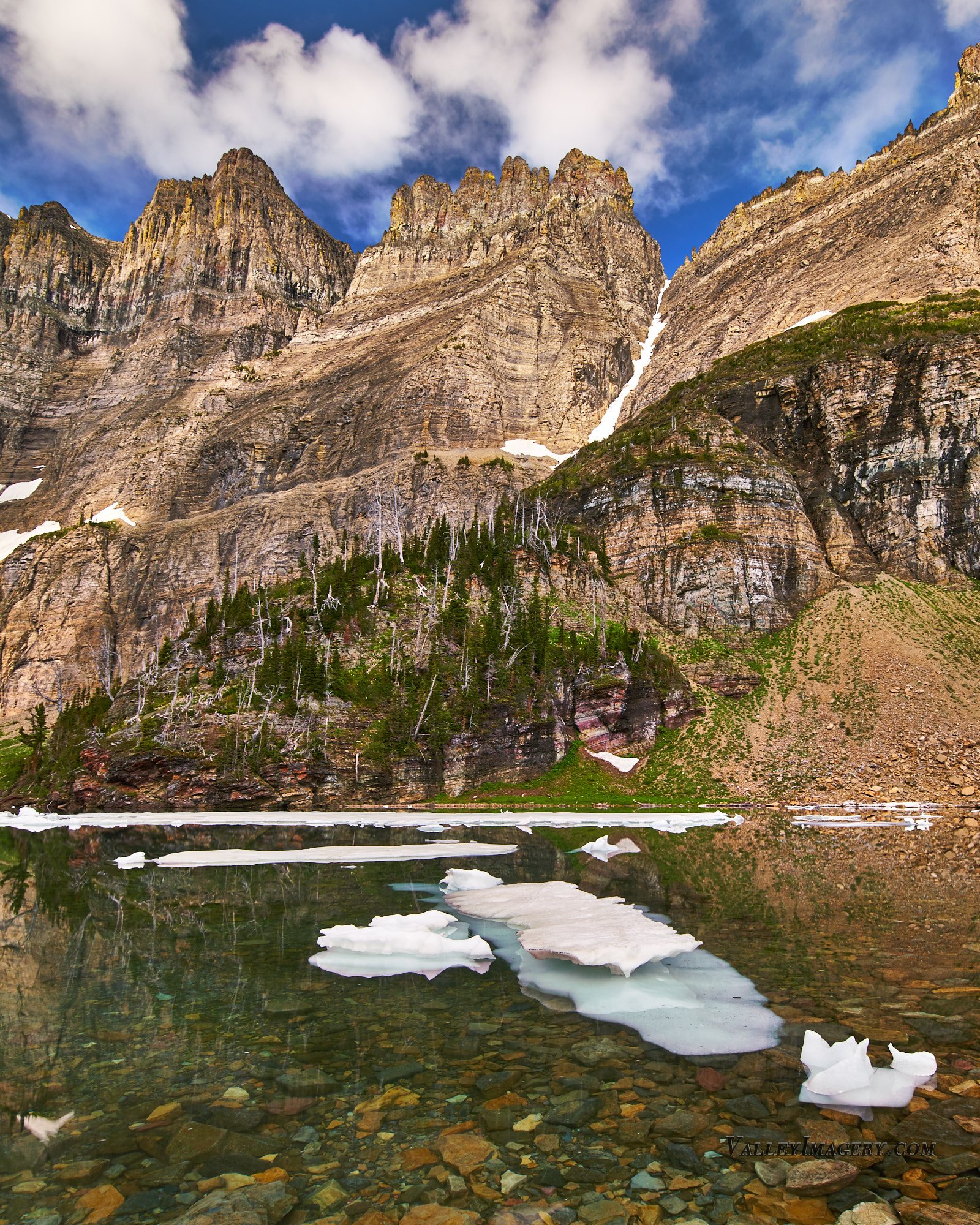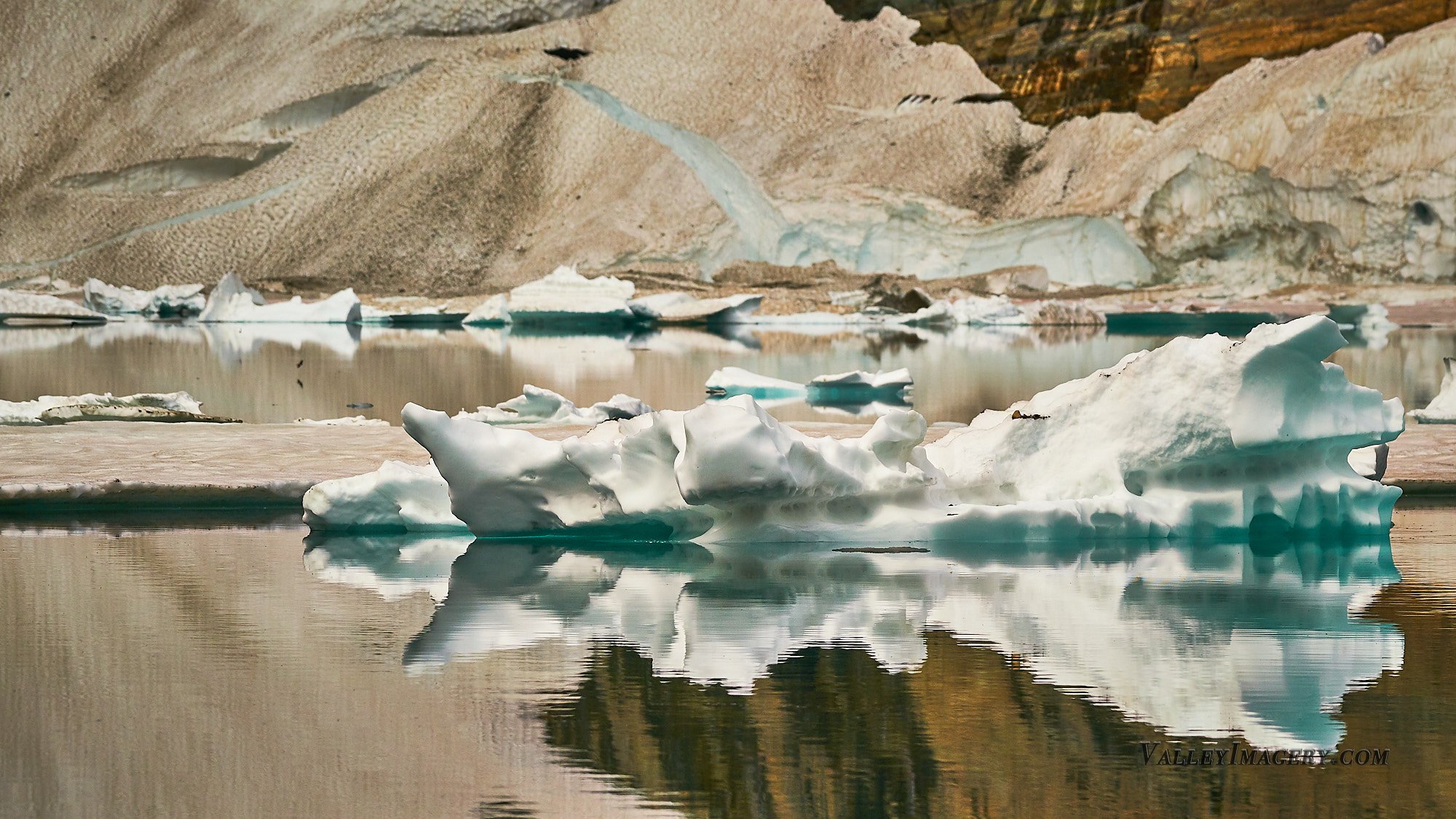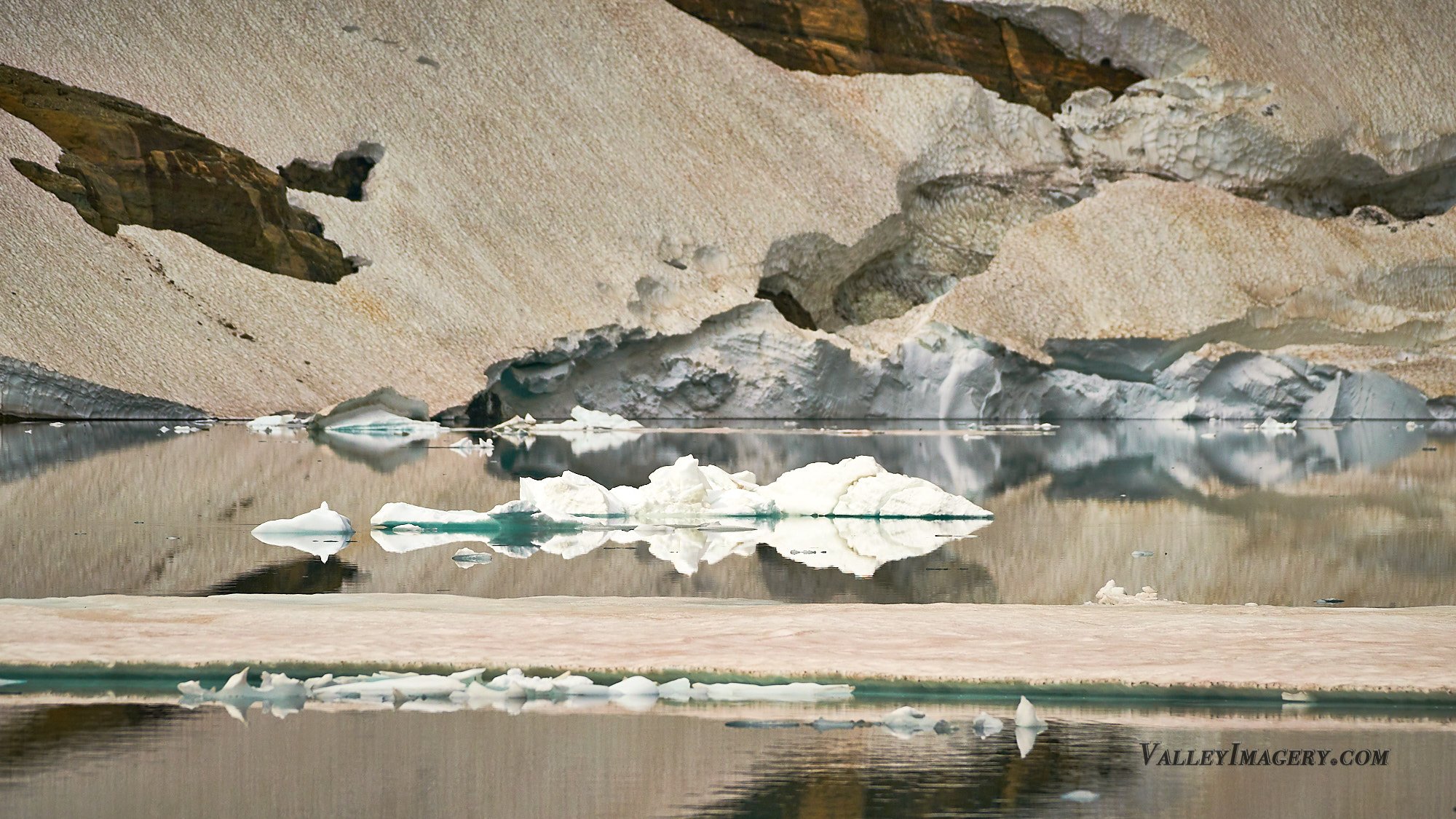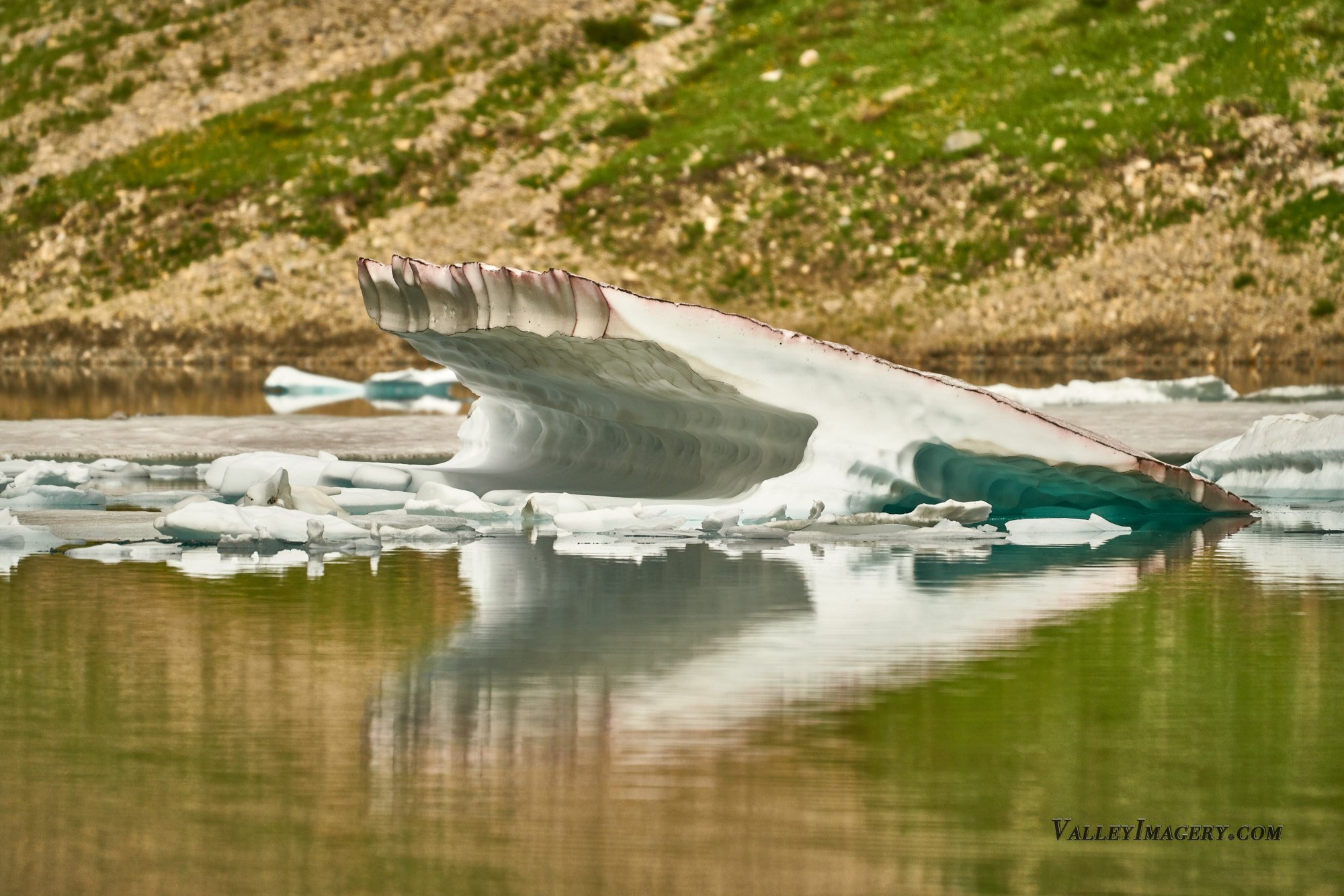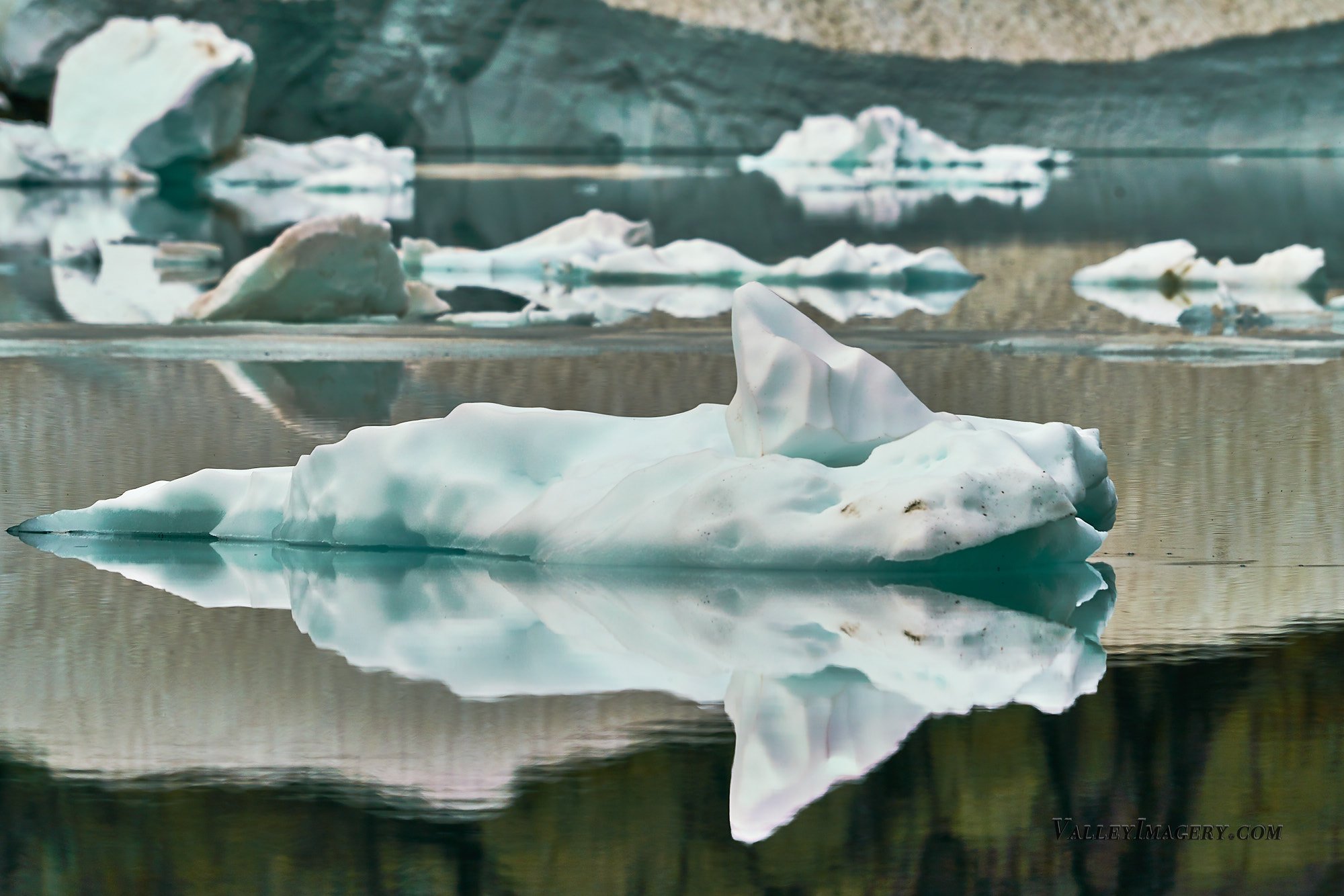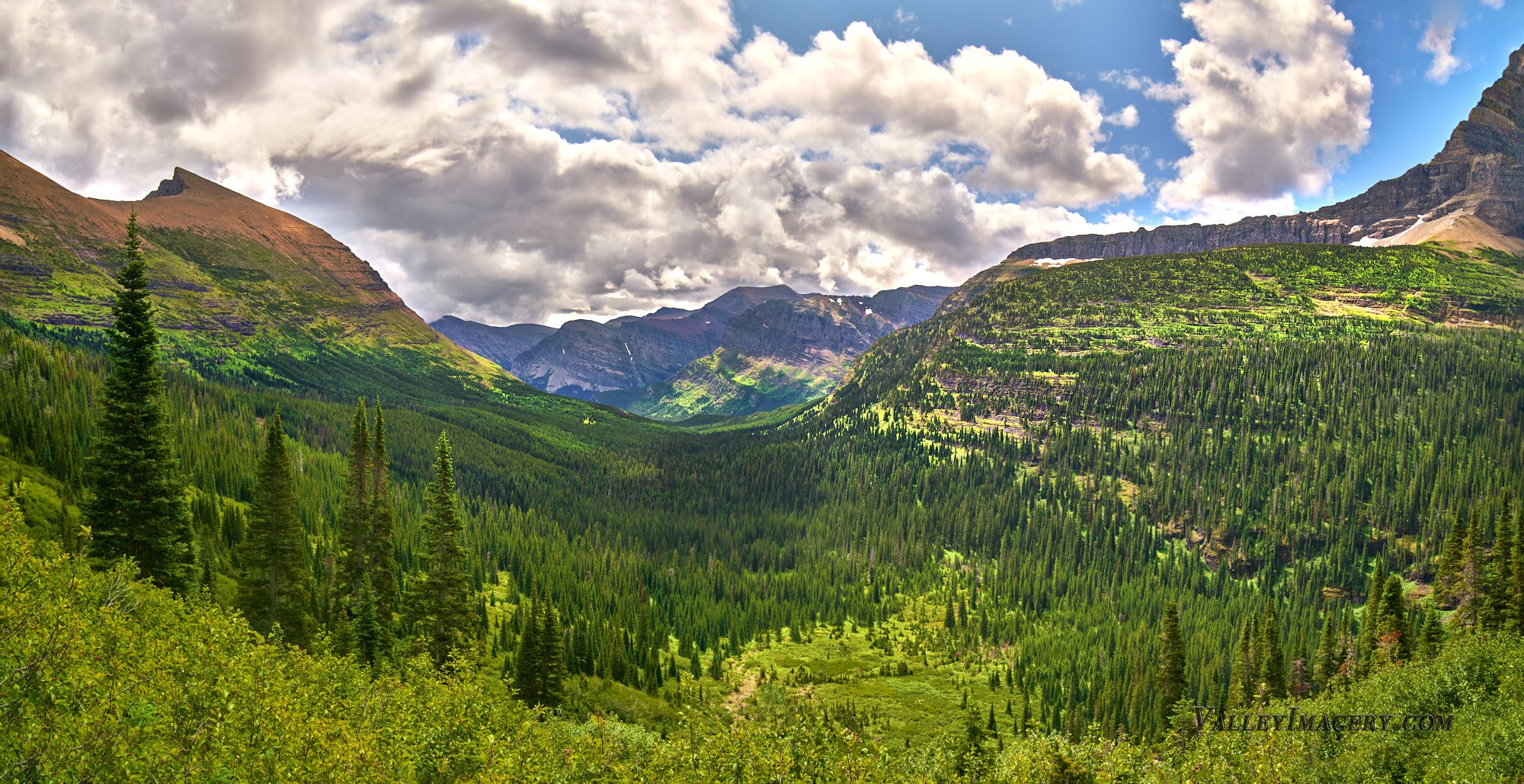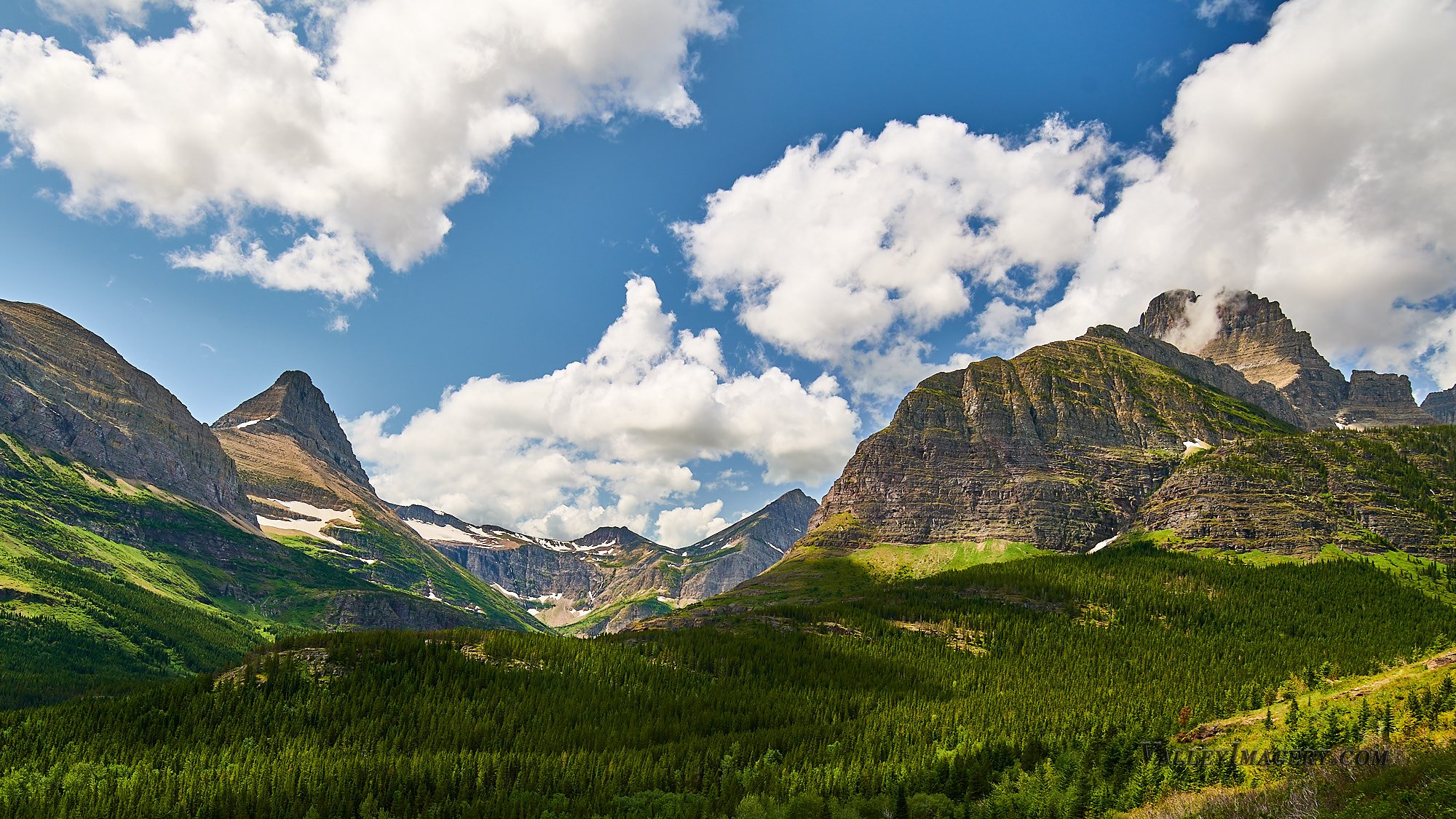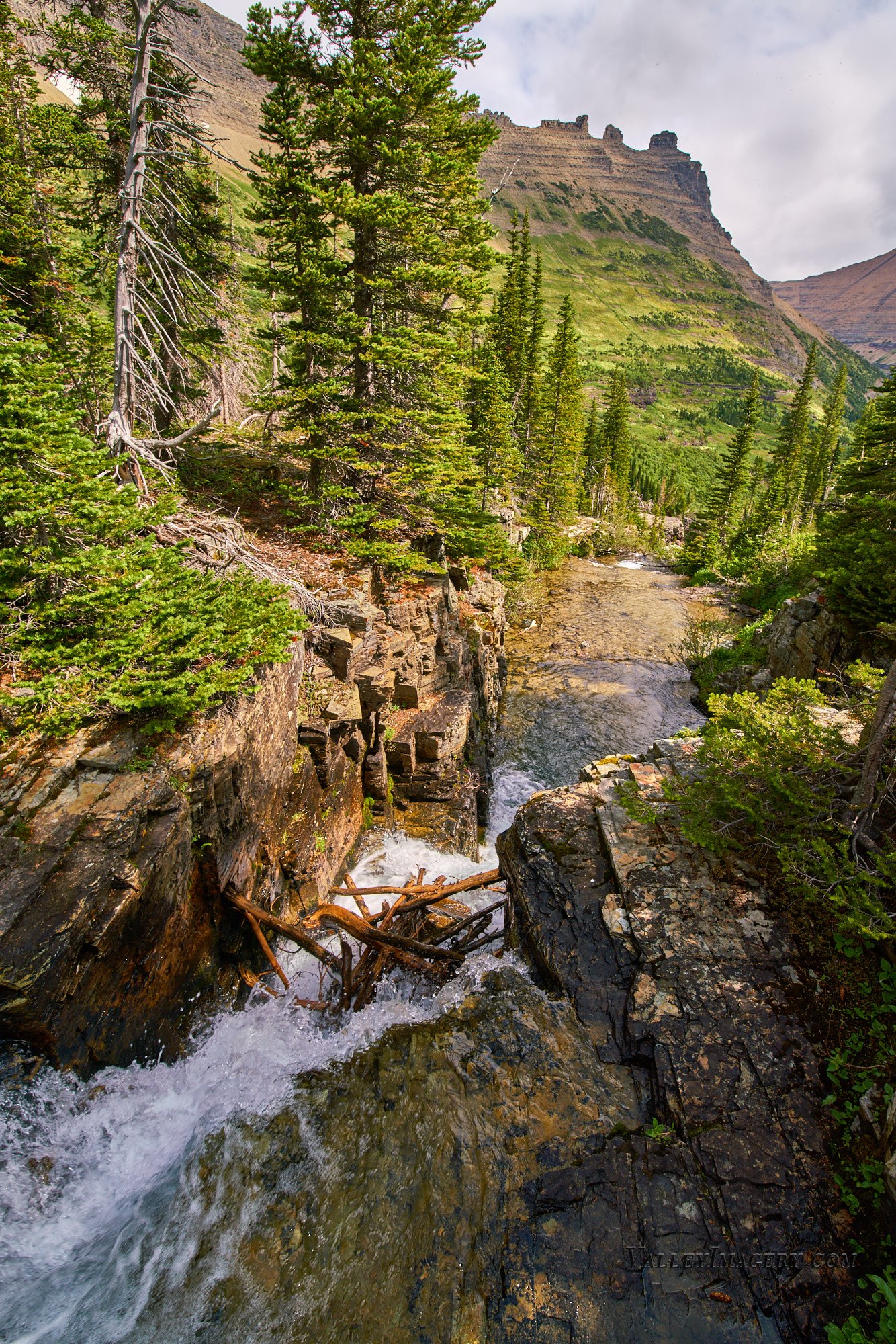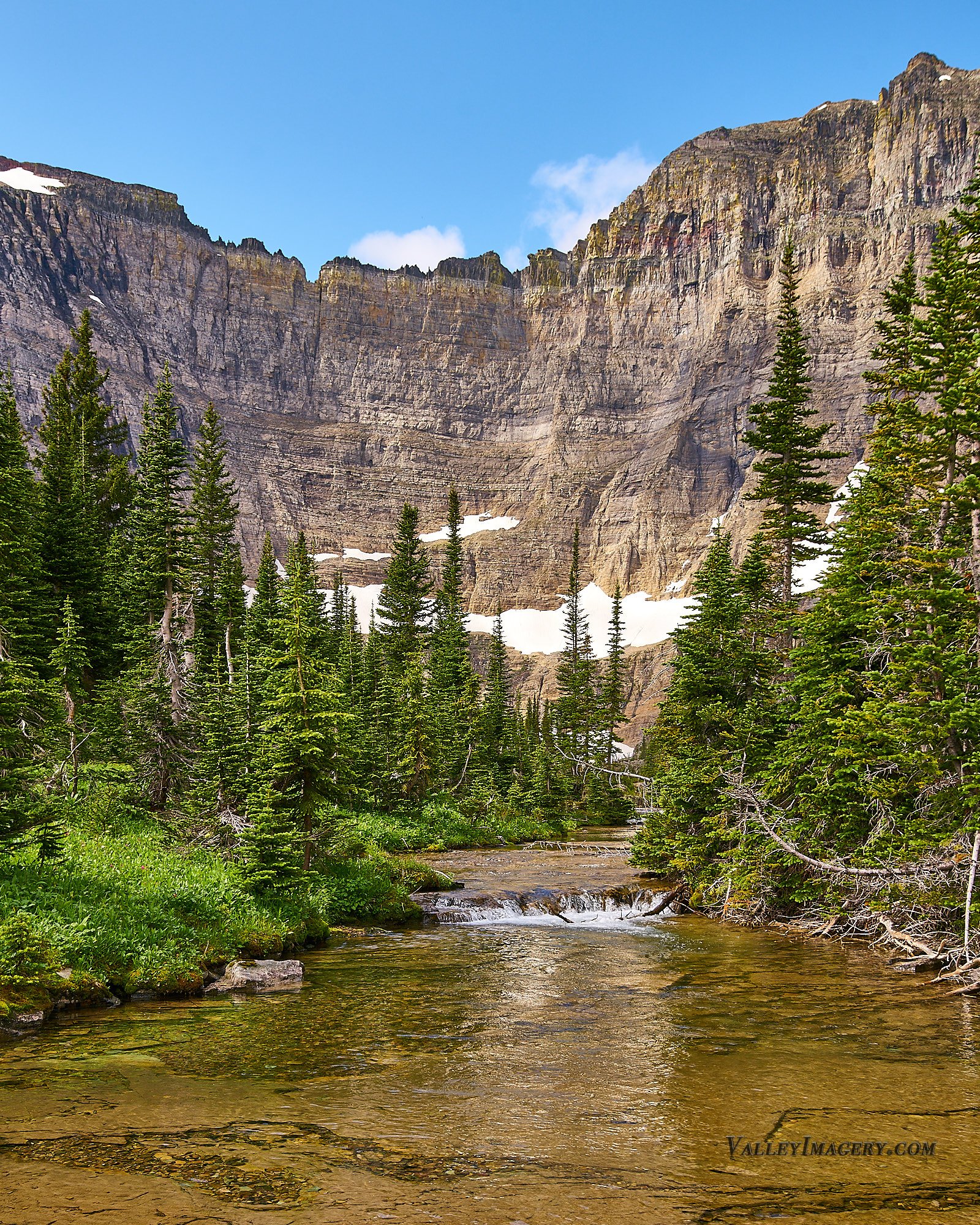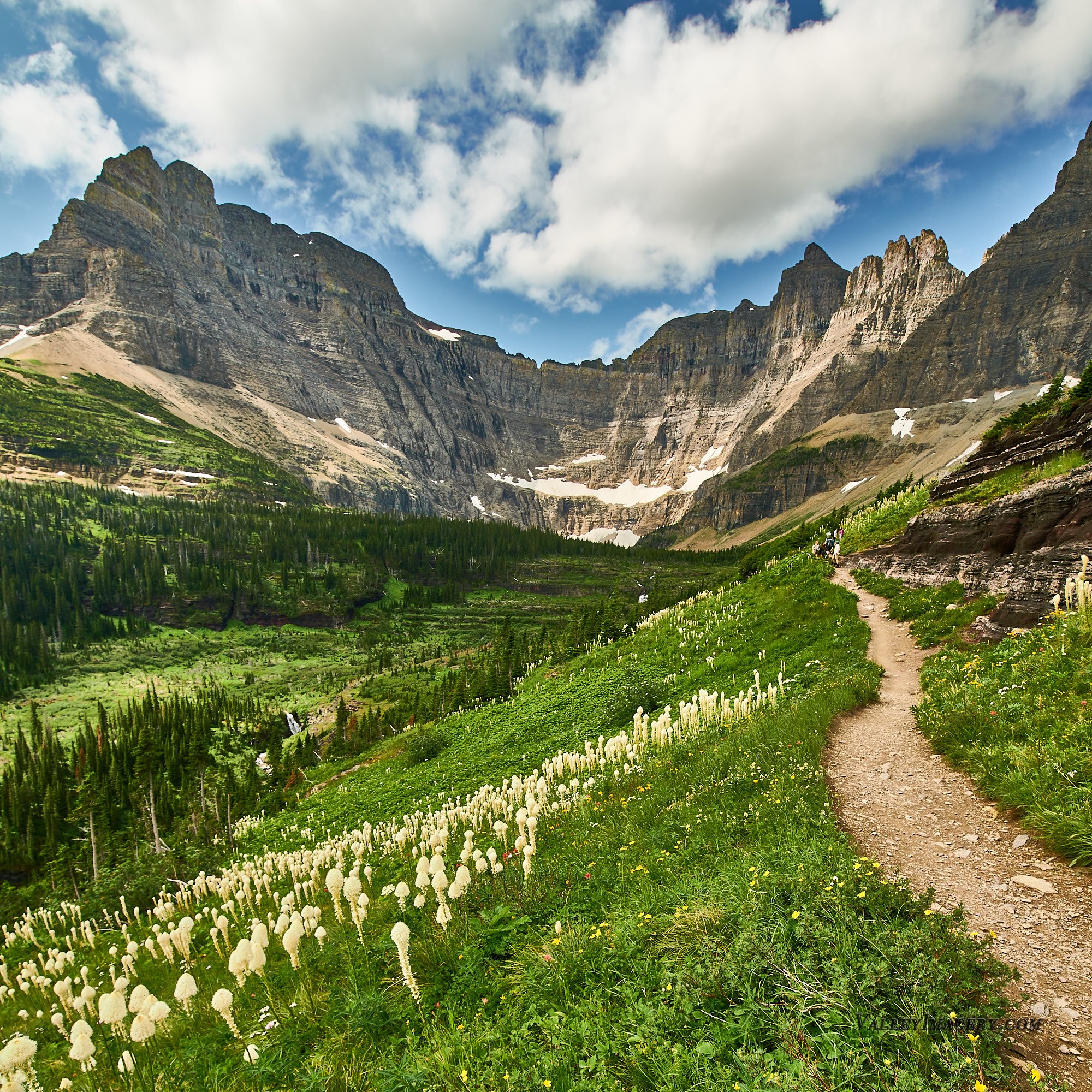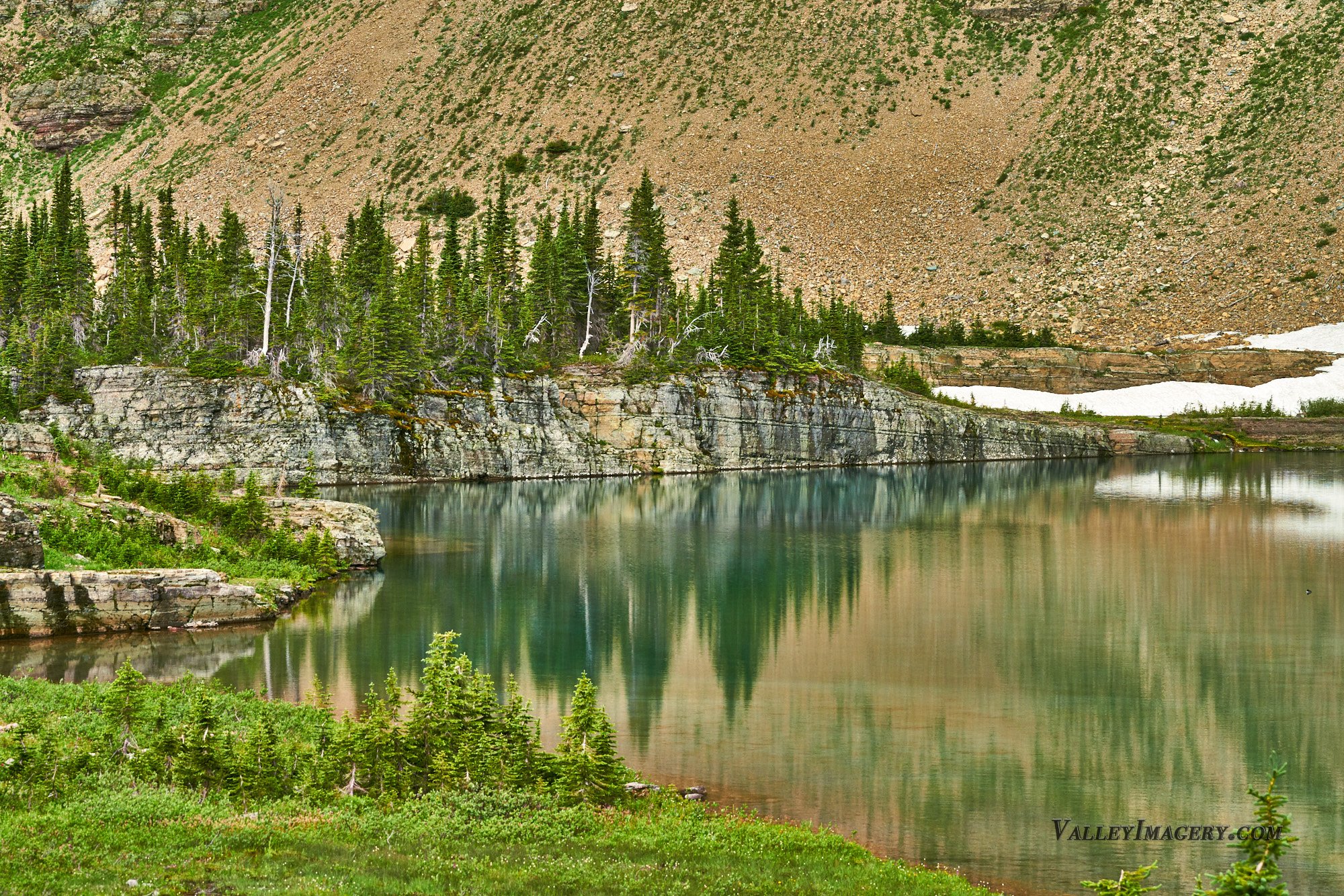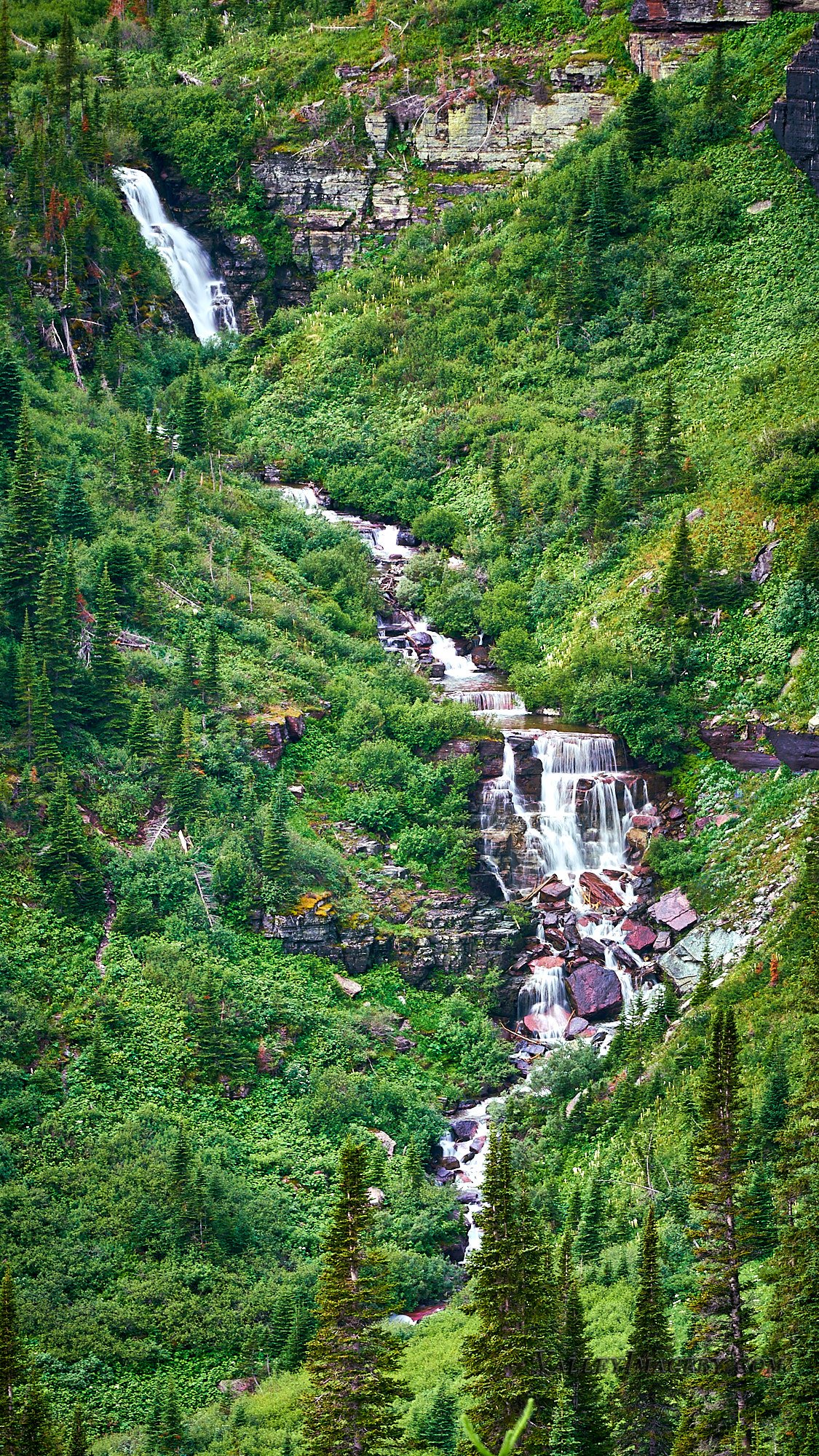
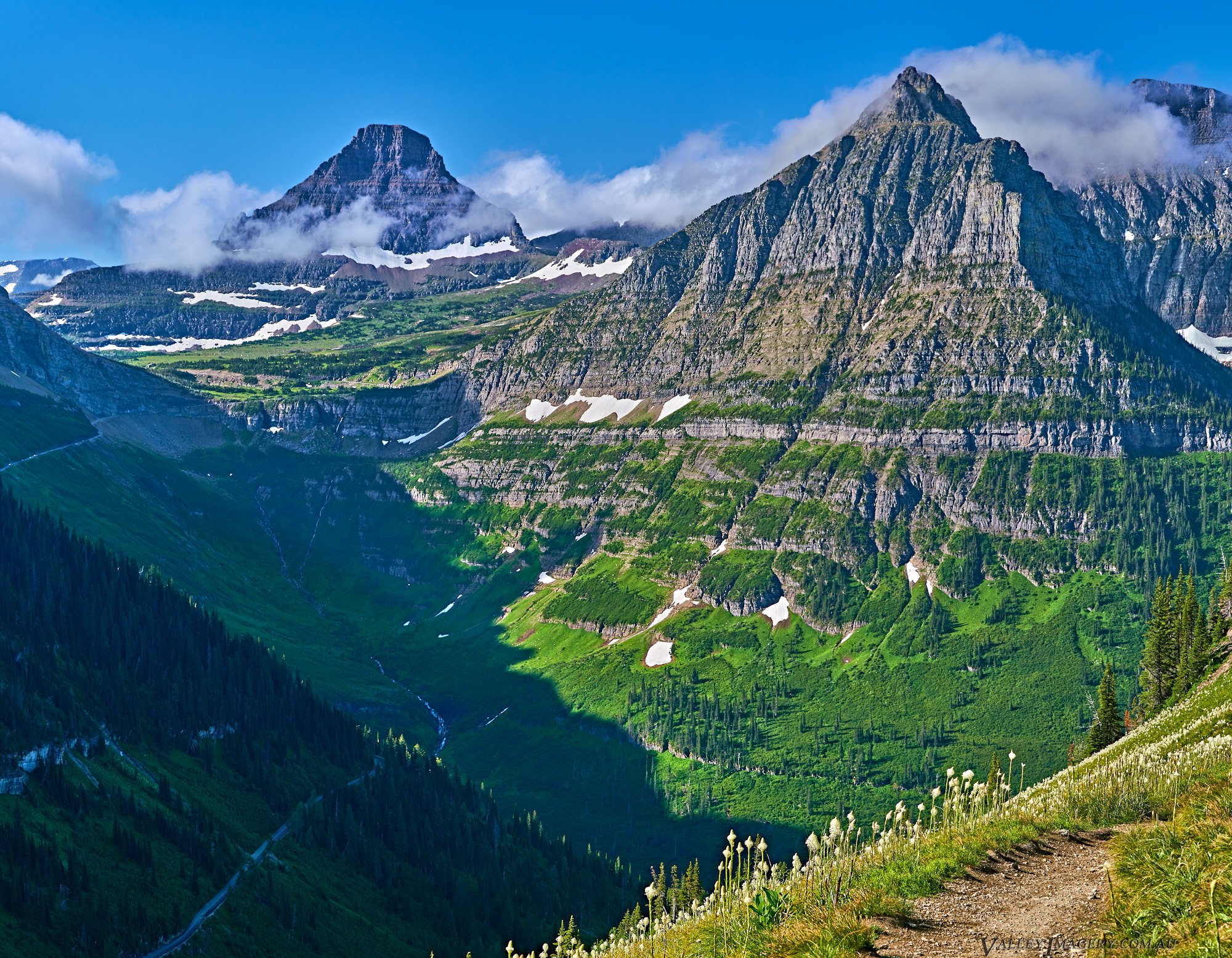
Situated in the very North of Montana USA, Glacier National Park is often called the Crown of the Continent. After a visit, it's easy to understand why. The Glacial carved environment has created tall mountains, crystal clear water and left behind a beautiful but rugged landscape. Although the park has a paved road network, it's limited by the steep mountainous terrain it's a real tribute to America that this place is even available as a public park. The effort to clear snow from the Going to the Sun rd annually is a massive effort, I for one are thankful for the effort. The privilege to visit the park is an experience not lost on any landscape photographer.
The park is large, at 1,583-sq.-mi its not something you could hope to see in a week. The glacier-carved landscape runs all the way to the Canadian border. There is access to activities including hiking, backpacking, cycling, kayaking and camping. Diverse wildlife ranges from Marmots and Mountain goats to Grizzly bears. As is normal for a national park, wildlife have the right of way, grizzly bear activity routinely closes trails and can modify your plans very quickly.
The headwaters of the streams that start here flow into the Pacific Ocean (Columbia River), the Gulf of Mexico (Mississippi River) and Hudson Bay (Nelson River) . What's more, the park boasts more than 700 lakes, numerous waterfalls and two separate mountain ranges.
In 1932, Waterton Lakes National Park in Alberta, Canada, and Glacier National Park partnered to create the world's first International Peace Park, a UNESCO World Heritage site. Both parks are biosphere reserves, featuring spectacular scenery and a wide variety of plant and animal species.
We arrived in the early afternoon after driving down from Canada and a brief visit to Waterton Lakes National Park, the Prince of Wales Hotel was a great place for lunch.
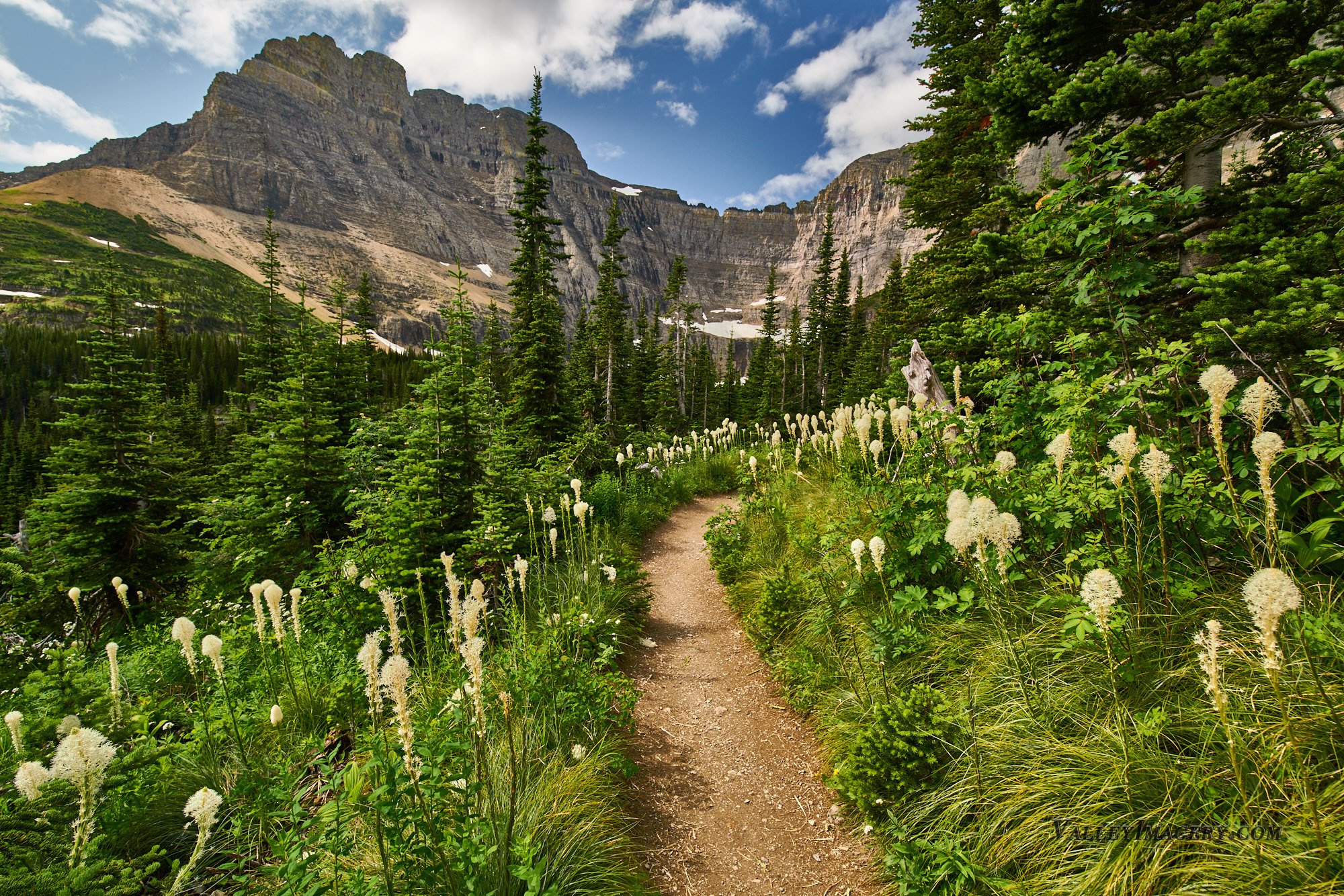
Up early as usual. I had a well thought out plan to catch the sunrise from the Many Glacier area and then hike to Glacier Lake. We left our ParkCabinCo cabin before dawn and carefully drove the 30 min to Swiftcurrent Lake. When we arrived the clouds had settled in and my opportunity for an iconic sunrise image was dashed.
Unpurturbed we headed to the the trailhead for the hike to iceberg lake. Its a popular 9.3 mile out and back hike, the initial part of the trek is quite steep however the majority of the hike is moderate to light.
As it was our first time hiking in Grizzly country we were apprehensive about being first on the trail. It didn't take long for other cars to join us in the small carpark, so we waited for a few people to start, clipped our bearspray on and then headed out. The start of this trail is a real heart starter, switchbacks, stairs and steep paths for at least the first 15 minutes, after this things become much more sedate.
The weather was threatening light rain, and the early parts of the hike were overcast and cool, but as we progressed the conditions slowly improved. The clouds became patchy and the drizzle left us, the sky was still mostly grey and overcast but I had plenty of optimism for a good afternoon.
We had a few short stops along the way with our first real break being at Ptarmagin falls, This was our first indication of how pure the water was, its completely clear (and cold) and deceptively deep. Here I took a few shots of the falls and grabbed a light snack before we headed on our way. Whilst we stopped the number of people on the trail became noticeable, it certainly wasn't busy but we were not far from other hikers anymore.
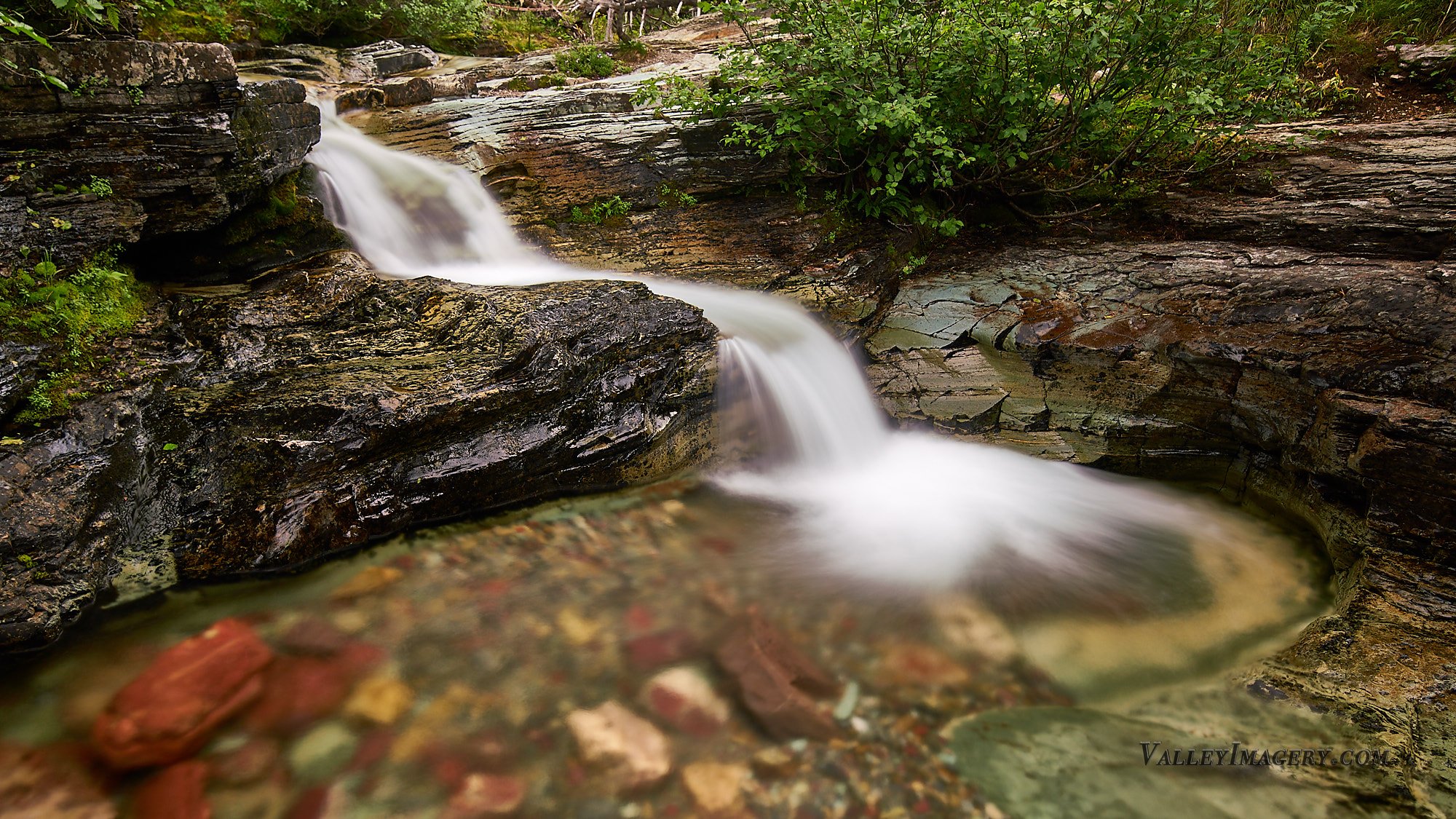
After Ptarmagan falls we walked along well trodden paths lined with Beargrass. the lake was clearly getting closer but it remained almost elusive and hidden. The track passed along steep ridges and we could now see across the valley, there were waterfalls and the green countryside was beautiful. As we came closer to the lake, the pathway crossed the stream that is fed by the meltwater, there are some low pedestrian bridges here and some very pretty scenes.
About an hour after leaving Ptarmagan falls we arrived at a small hill near the lake, as you begin the decent the lake becomes visible and more of the destination comes into view. It doesn't become fully visible until you get to the bank though, once you are here the beauty of the crystal clear water filled with icebergs and surrounded by mountains becomes apparent.
When we visited in Jun the lake had numerous floating blocks of ice, these had obviously broken away from the small glacier that occupied the base of the mountain, there were many shapes and sizes and a they were very slowly drifting, cracking and melting into the lake.
Upon arriving we found a large rock to rest on and ate a small lunch, After this I explored the shoreline and took a number of images to remember the scene.
